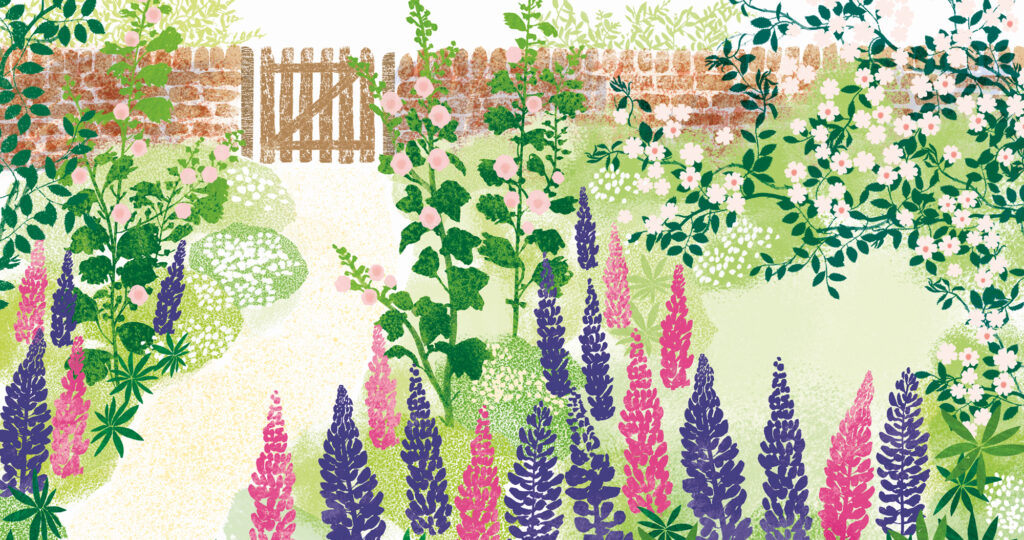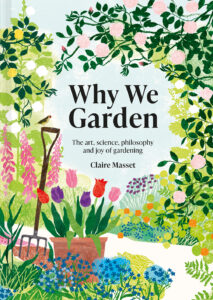Why We Garden: wisdom from three famous gardeners

As the weather warms and we return to the sanctuary of our favourite outdoor spaces, author Claire Masset explores the mystery of what it is that makes us love gardening in her new book Why We Garden. Hear from three famous gardeners on what makes the garden special for them.
Delving into history, science, art and philosophy of centuries past, Why We Garden is a quaint little book and a hymn to gardening, drawing inspiration from the gardening greats. From ancient Greek and French philosophers, via the wisdom of Margery Fish and Gertrude Jekyll, to Monty Don and modern-day gardeners – this is a thoughtful little book for everyone with green fingers. Read on to find out what makes the garden such a special place for painter Claude Monet, novelist Elizabeth Von Arnim and Sissinghurst co-creator Harold Nicolson.

‘I must have flowers,
always, and always.’
Claude Monet
Monet didn’t have just any flowers though; his artist’s eye and horticultural knowledge told him which plants to select and where to put them to create a garden which was, quite simply, beautiful. Isn’t that what all gardeners want – a mini Giverny? Not a smaller, facsimile version, but what it represents: a satisfying creative endeavour, a visual delight. Monet, the ultimate artist-gardener, loved his garden perhaps even more than his painting. For the last 43 years of his life, it was his inspiration, his joy, his world. But it was also, he confessed, his ‘most beautiful masterpiece’. Our natural desire to create beauty is nowhere better served than in a garden, and this is despite gardening’s many challenges. It is the most difficult art to get right. To be successful, you need to create a complete experience: one that you can look at, like a painting, but also walk around. A garden is a space you inhabit. It envelops you, not just with its physical boundaries, but with its spirit – a distinct nature incorporating movement, light and sound, which the gardener has helped to fashion.

‘The garden is the place
I go for refuge and shelter,
not the house.’
Elizabeth Von Arnim
In Elizabeth and her German Garden (1898), the eponymous heroine escapes into the garden whenever she can. ‘In the house are duties and annoyances, but out there blessings count me at every step,’ she writes. Her garden is her sanctuary, where she feels ‘protected and at home’, where ‘every flower and weed is a friend and every tree a lover. When I have been vexed I run to them for comfort, and when I have been angry without just cause, it is there I find absolution.’ Her garden even bestows kindness and forgiveness.
‘A series of escapes from the world’
Harold Nicolson
Harold Nicolson, co-creator of Sissinghurst with his wife Vita Sackville-West, described his plot as ‘a succession of privacies’. The garden ‘rooms’ amount to a ‘series of escapes from the world, giving the impression of cumulative escape.’ Because of this, Sissinghurst ‘has a quality of mellowness, of retirement, of unflaunting dignity.’ Anyone who has been lucky enough to enjoy its famous White Garden on a quiet day will know what he means. Theirs was not one sanctuary but a string of them, each with its own atmosphere, each a garden in itself, self-contained and introspective. The vibrant yet homely Cottage Garden, the romantic Rose Garden, the light-suffused Nuttery, the peaceful Herb Garden – all share that same quality of quiet withdrawal.
Why We Garden is available to buy from good booksellers and online.
Illustrations by Claire Harrup
Why We Garden
Claire Masset | £14.99


